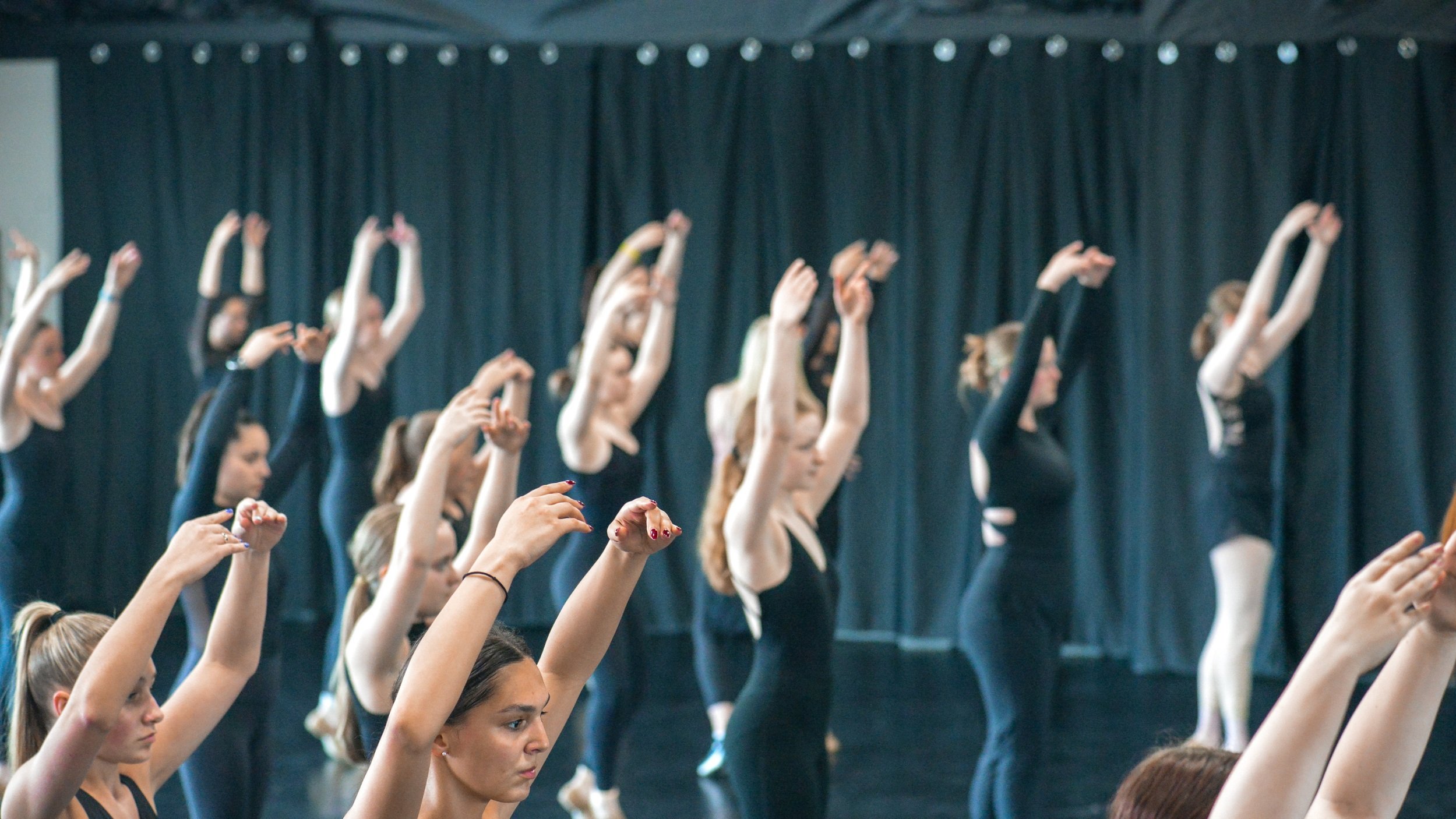
Ballet, Jazz, Tap, Contemporary, Hip-Hop, AcroDance, ProDance + Lyrical Jazz
Dancers Ages 6 + Up
At New Vision Dance Center, we take pride in offering a wide range of dance classes that cater to dancers of all ages and skill levels. Visit our class schedule to check out all our offerings.
What’s the difference between dance styles?
-
Ballet
Ballet has its beginnings in 15th century Italy. Ballet was taught to noblemen and women by dance masters. The nobility then performed dances during elegant events, such as weddings. In the 17th century, Louis XIV, who enjoyed dancing thoroughly, made ballet a popular dance form. Louis XIV’s interest in this dance form transformed ballet taking it from something that had novice participation to an art form that mandated training. There are two types of ballet: story ballet and plotless ballet. In a story ballet, the dancers are acting out a narrative and there are characters as well as a distinct beginning and ending. A plotless ballet does not tell a story but rather may be used for emotional expression or to provide musical interpretation. There are three styles of ballet: classical, neo-classical, and contemporary. Classical ballet features the classical form, in which dancers turn their legs outward and complete pointe work. This style of ballet is usually seen in story ballet and often features intricate costumes and sets. Neo-classical ballet often has understated costumes and sets, a popular classical Ballet holiday favorite, The Nutcracker. In this style of ballet, dancers exhibit faster, more intense movements. Contemporary ballet borrows many traits from modern dance. In this ballet style, dancers turn legs inward and often complete floor work. The dancers may wear pointe shoes, ballet flat shoes, or be barefoot.
-
Jazz
Featuring energizing music and powerful movements, jazz is a dance style that is fun to participate in and enjoyable to watch. Common jazz movements include turns and leaps. Jazz also has its own distinctive movements such as the jazz walk and the contraction. Jack Cole, Bob Fosse, and Gus Giordano are three of the most influential contributors to jazz dance. These famous choreographers incorporated movements such as long knee slides, isolations, and inward knees into jazz. Dancers with a strong ballet background are likely to do well in jazz because they have developed the ability to move gracefully while maintaining balance.
-
Tap
Tap dancing is a combination of both Irish clogging and step dancing and West African dance and drumming that originated in the mid 1600s. Developed in the Deep South, it wasn’t until the mid 1800s that tap dancing was performed on stage in a formal setting. Tap dancing continued to grow in popularity, reaching its peak during the 1920s, the 1930s, and the 1940s. Tap dancing may be accompanied by music, or the dancer may perform without any accompaniment. The distinctive part of a tap dancer’s costume is the unique shoe used in the dance style. Each part of a tap dancer’s shoe makes a different noise, and often the shoe features adjustable screws in the sole, which can be altered to produce varying sounds
-
Contemporary
Contemporary dance is a dance performance genre that developed during the mid-twentieth century and has since grown to become one of the dominant genres for formally trained dancers throughout the world, with particularly strong popularity in the U.S. and Europe. Although originally informed by and borrowing from classical, modern, and jazz styles, it has since come to incorporate elements from many styles of dance. Due to its technical similarities, it is often perceived to be closely related to modern dance, ballet, and other classical concert dance styles. In terms of the focus of its technique, contemporary dance tends to combine the strong and controlled legwork of ballet with modern dance’s stress on the torso, and also employs contract-release, floor work, fall and recovery, and improvisation characteristic of modern dance. Unpredictable changes in rhythm, speed, and direction are often used, as well.
-
Hip Hop
Hip-hop dance refers to street dance styles primarily performed to hip-hop music or that have evolved as part of hip-hop culture. It includes a wide range of styles primarily breaking, locking, and popping, which were created in the 1970s and made popular by dance crews in the United States. Television shows and films showcased these crews and dance styles in their early stages; therefore, giving hip-hop mainstream exposure. The dance industry responded with a commercial, studio-based version of hip-hop—sometimes called “new style”—and a hip-hop influenced style of jazz dance called “jazz-funk.” Classically trained dancers developed these studio styles in order to choreograph from the hip-hop dances that were performed on the street. Because of this development, hip-hop dance is practiced in both dance studios and outdoor spaces. What distinguishes hip-hop from other forms of dance is that it is often “freestyle” (improvisational) in nature and hip-hop dance crews often engage in freestyle dance competitions—colloquially referred to as “battles.” Hip-hop dance can be a form of entertainment or a hobby. It can also be a way to stay active in competitive dance and a way to make a living by dancing professionally.
-
AcroDance
“AcroDance” is a combination of acrobatic- and dance-based techniques. Dancers use practices learned in ballet and jazz with acrobatics (similar to gymnastics) to supplement their dance skills.
-
ProDance
Is geared to crowd entertaining routines and performance execution. Dancers will learn skills that will dazzle a crowd with turns, jumps and choreography. You will also learn to dance with poms, learn kick lines and more! This super fun and energic class is sure to boast your dancers confidence!
-
Lyrical Jazz
Your dancer will work on technique to build up to complex steps and movements for progressions. Blends elements of Ballet and Jazz with fluid, smoother movements while engaging an emotional response.
